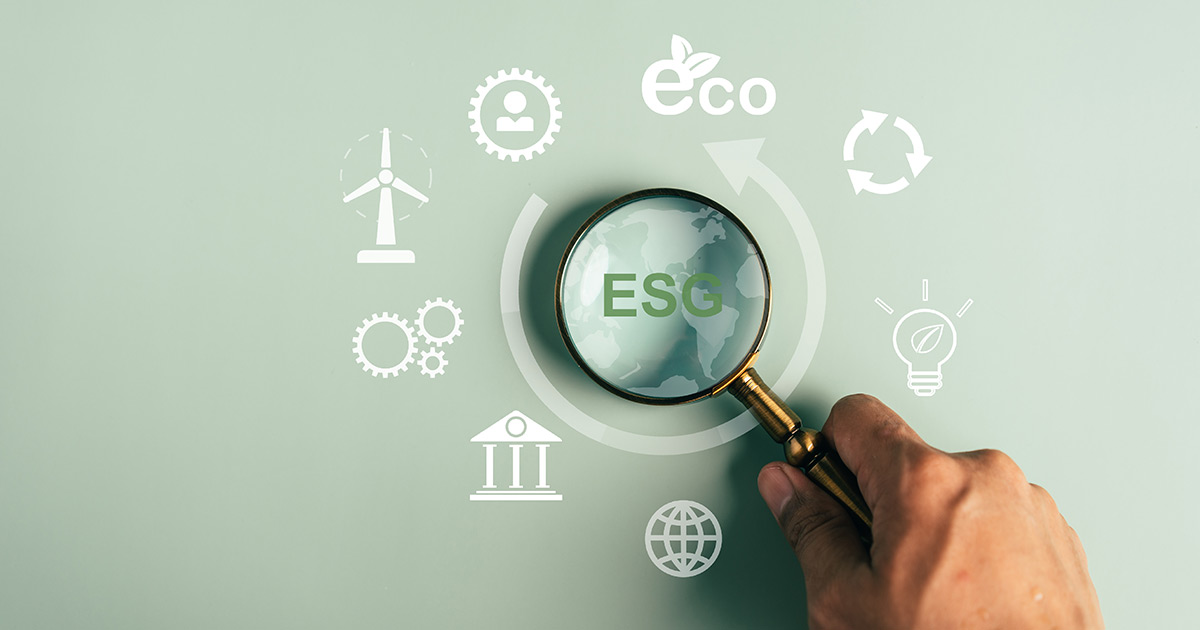As the world moves toward a more sustainable future, businesses, governments, and organizations are under increasing pressure to demonstrate their commitment to environmental, social, and governance (ESG) practices. This shift is not just about ensuring profitability or reducing environmental impacts; it’s also about aligning business goals with the global sustainability agenda. One of the key tools for tracking and reporting progress in this area is ESG Reporting.
Understanding ESG Reporting
Before diving into how to align your ESG Reporting with global sustainability goals, it’s essential to understand what ESG reporting is and why it’s crucial for businesses.
ESG Reporting refers to the disclosure of a company’s impact and performance in three key areas:
- Environmental: This includes practices related to climate change, waste management, carbon emissions, resource consumption, and environmental impacts.
- Social: This focuses on the company’s relationships with employees, customers, communities, and other stakeholders, covering diversity, equity, inclusion, health and safety, and community engagement.
- Governance: This area involves the company’s leadership, ethics, transparency, and governance structures, ensuring accountability and responsible business practices.
The goal of ESG Reporting is to provide stakeholders, including investors, consumers, and regulators, with clear and transparent information on how a business manages these critical areas. As the demand for transparency increases, businesses must ensure their ESG Reporting is aligned with global sustainability frameworks to maximize their impact.
The Importance of Global Sustainability Goals
The United Nations Sustainable Development Goals (SDGs) are the cornerstone of global sustainability efforts. Adopted in 2015, these 17 goals provide a universal framework for tackling the world’s most pressing challenges, from climate change and poverty to inequality and access to clean water.
For businesses and organizations, aligning Sustainability Reporting with these SDGs is not just a way to measure their impact, but also an opportunity to contribute to global solutions. Whether it’s reducing carbon footprints, improving labor conditions, or ensuring good governance, aligning your business practices with these goals can enhance your credibility, attract investors, and drive long-term value.
Aligning ESG Reporting with the SDGs
Understand the SDGs Relevant to Your Business
The first step in aligning ESG Reporting with global sustainability goals is identifying which SDGs are most relevant to your organization. While all 17 goals are interconnected, some may be more applicable depending on the nature of your business.
For example, a manufacturing company might focus on SDG 12: Responsible Consumption and Production by reducing waste and improving energy efficiency, while a tech company might concentrate on SDG 9: Industry, Innovation, and Infrastructure by fostering sustainable technologies and promoting innovation.
Start by mapping your existing business practices against the SDGs to identify where your company is already making an impact. This will also highlight areas for improvement, helping you set concrete goals for the future.
Set Measurable and Achievable Targets
Once you have identified the relevant SDGs, the next step is to set specific, measurable, achievable, realistic, and time-bound (SMART) targets. These targets will provide the foundation for your Sustainability Reporting and ESG disclosures.
For example, if your company is committed to SDG 13: Climate Action, a measurable target could be reducing carbon emissions by 20% over the next five years. If you’re focusing on SDG 8: Decent Work and Economic Growth, a target could involve increasing the diversity of your workforce or improving employee retention rates.
Setting clear, quantifiable targets is essential for tracking progress and demonstrating the effectiveness of your sustainability efforts in ESG Reporting.
Incorporate International Reporting Standards
To ensure your Sustainability Reporting is aligned with global sustainability goals, it’s crucial to adhere to international reporting frameworks and standards. The most commonly recognized standards include:
- Global Reporting Initiative (GRI): The GRI Standards are widely regarded as the most comprehensive framework for sustainability reporting, covering a broad range of environmental, social, and governance topics.
- Task Force on Climate-related Financial Disclosures (TCFD): TCFD guidelines provide a framework for disclosing climate-related financial risks and opportunities, helping businesses align their ESG Reporting with climate action goals.
- Sustainability Accounting Standards Board (SASB): SASB standards focus on industry-specific sustainability issues and provide clear guidance on what to report and how to do it.
- CDP (formerly Carbon Disclosure Project): CDP is a global disclosure system that enables businesses to report on their environmental impact, including greenhouse gas emissions, water usage, and forest management.
Adopting one or more of these frameworks will ensure that your Sustainability Reporting is robust, credible, and in line with global expectations, making it easier for stakeholders to assess your alignment with the SDGs.
Embed Sustainability into Corporate Strategy
Aligning ESG Reporting with the global sustainability goals requires more than just reporting; it involves embedding sustainability into the core business strategy. This means integrating sustainability considerations into every aspect of your business, from supply chain management to product development.
To achieve this, companies must ensure that sustainability is a top priority for leadership. Create cross-functional teams responsible for driving sustainability initiatives, set long-term goals, and ensure sustainability efforts are included in corporate decision-making processes.
By embedding sustainability into corporate strategy, businesses can create value not only for themselves but also for society at large. This alignment with global sustainability goals enhances brand reputation, drives innovation, and attracts investors who increasingly focus on sustainable business practices.
Report Transparently and Regularly
Effective Sustainability Reporting involves providing stakeholders with accurate and transparent information on your progress toward achieving the SDGs. Reports should highlight both successes and openly address challenges and areas needing improvement.
Transparency is essential for building trust with stakeholders, including investors, customers, employees, and regulators. It also allows companies to track their progress over time and make adjustments as necessary. Regularly updating your ESG Reporting is crucial, as sustainability is an ongoing journey that requires continuous evaluation and improvement.
Annual sustainability reports are common, but many companies are now moving towards more frequent updates, such as quarterly or even monthly disclosures, to keep stakeholders informed and engaged.
Benefits of Aligning ESG Reporting with Global Sustainability Goals
Enhanced Reputation and Trust
Stakeholders see businesses that align their ESG reporting with global sustainability goals as responsible, forward-thinking, and transparent. This can significantly enhance your brand reputation and build trust with customers, investors, and employees who value sustainability. By publicly demonstrating your commitment to the SDGs, you show that your company is part of the solution, not the problem.
Attracting Investment
There is a growing trend among investors to favor companies that prioritize sustainability and responsible business practices. Many investors now use ESG criteria as a key factor in their decision-making process. By aligning your Sustainability Reporting with the SDGs, you increase your chances of attracting investment from ESG-focused funds and investors who are keen on supporting sustainable companies.
Competitive Advantage
As more businesses adopt sustainability practices, being a leader in this space can provide a competitive advantage. Aligning your ESG Reporting with the SDGs helps you stay ahead of the curve, demonstrating your commitment to sustainability and innovation. This can give you an edge in the marketplace, attract top talent, and strengthen your position as a leader in your industry.
Regulatory Compliance
Governments around the world are tightening regulations around sustainability and ESG Reporting. By aligning your reporting with global sustainability goals, you can ensure that your business stays ahead of potential regulatory requirements and avoids penalties for non-compliance. This proactive approach helps you mitigate risks and demonstrates your commitment to responsible business practices.
Conclusion
Aligning ESG Reporting with global sustainability goals is not just a trend but a necessity for businesses looking to thrive in the modern world. To begin with, understanding the SDGs, then setting measurable targets, followed by adopting international reporting standards, and ultimately embedding sustainability into your corporate strategy will enable your organization to contribute meaningfully to a sustainable future. Moreover, reporting transparently ensures both accountability and trust, which are essential for long-term success.
In the current landscape, businesses face increasing pressure from stakeholders and regulators to adopt more sustainable practices. Therefore, aligning your Sustainability Reporting with the global sustainability agenda is a strategic move. Not only does this approach benefit your company, but it also plays a crucial role in driving positive change for the planet and society.





